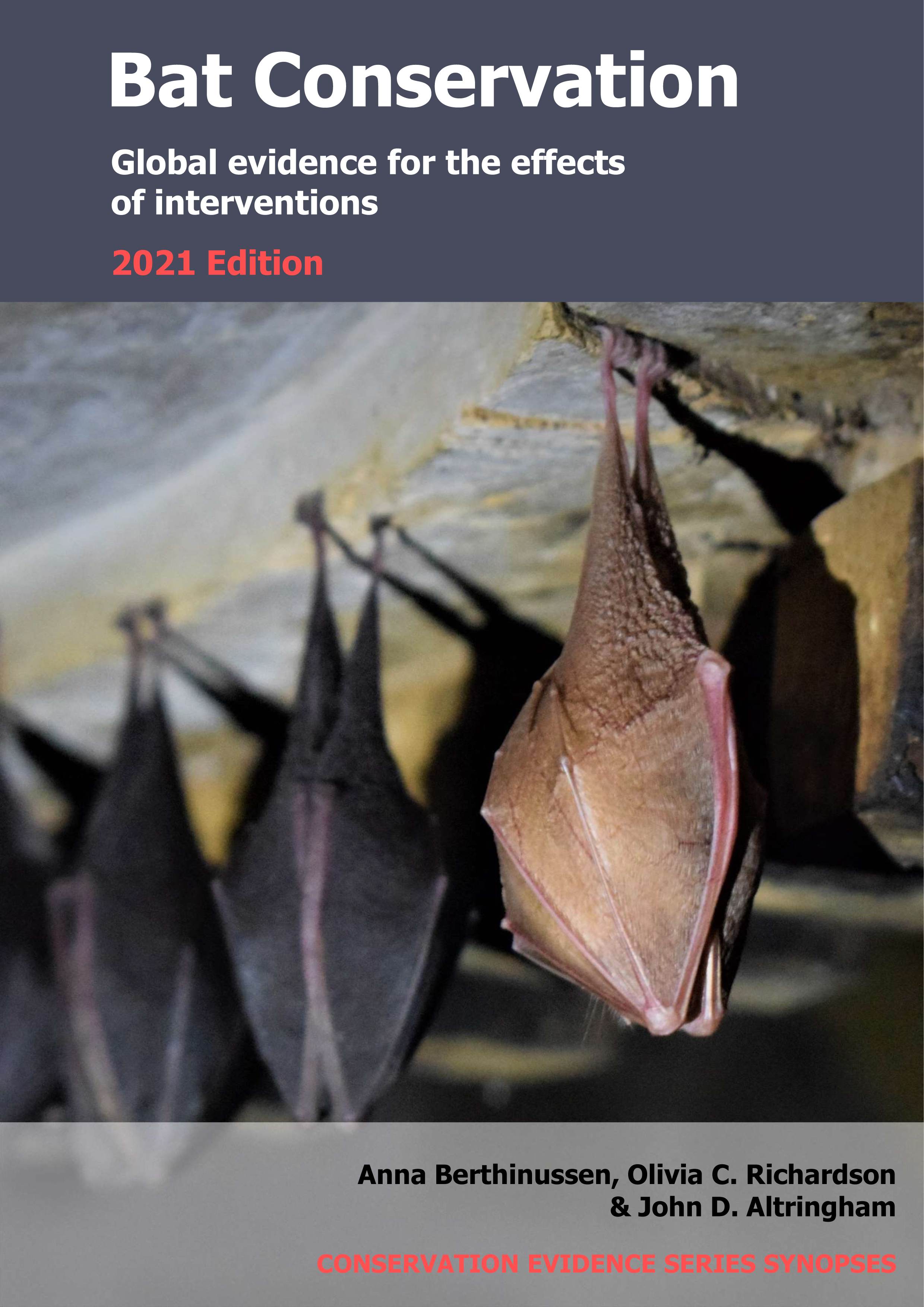Engage farmers and landowners to manage land for bats
-
Overall effectiveness category Unknown effectiveness (limited evidence)
-
Number of studies: 1
View assessment score
Hide assessment score
How is the evidence assessed?
-
Effectiveness
55% -
Certainty
20% -
Harms
0%
Study locations
Supporting evidence from individual studies
A study in 1995–2003 of the greater horseshoe bat project in England, UK (Longley 2003) found that the landowner engagement project resulted in 77 bat-related management agreements covering approximately 6,536 ha of land in Devon, Cornwall, and Somerset. This included 80 km of new/restored hedgerow and 400 ha of grassland within key areas surrounding greater horseshoe bat Rhinolophus ferrumequinum maternity roosts. The overall population of greater horseshoe bats at four maternity roosts in Devon was found to increase by 58% in 1995–2003, although the authors note that it is difficult to directly attribute this increase to the project. Advice was provided to 163 landowners and five organisations during farm visits, training seminars and farm walks. Support was also provided with grant applications. The project was widely publicised in the press (24 articles) and TV/radio (five programmes).
Study and other actions tested
Where has this evidence come from?
List of journals searched by synopsis
All the journals searched for all synopses
This Action forms part of the Action Synopsis:
Bat Conservation
Bat Conservation - Published 2021
Update 2020





)_2023.JPG)














